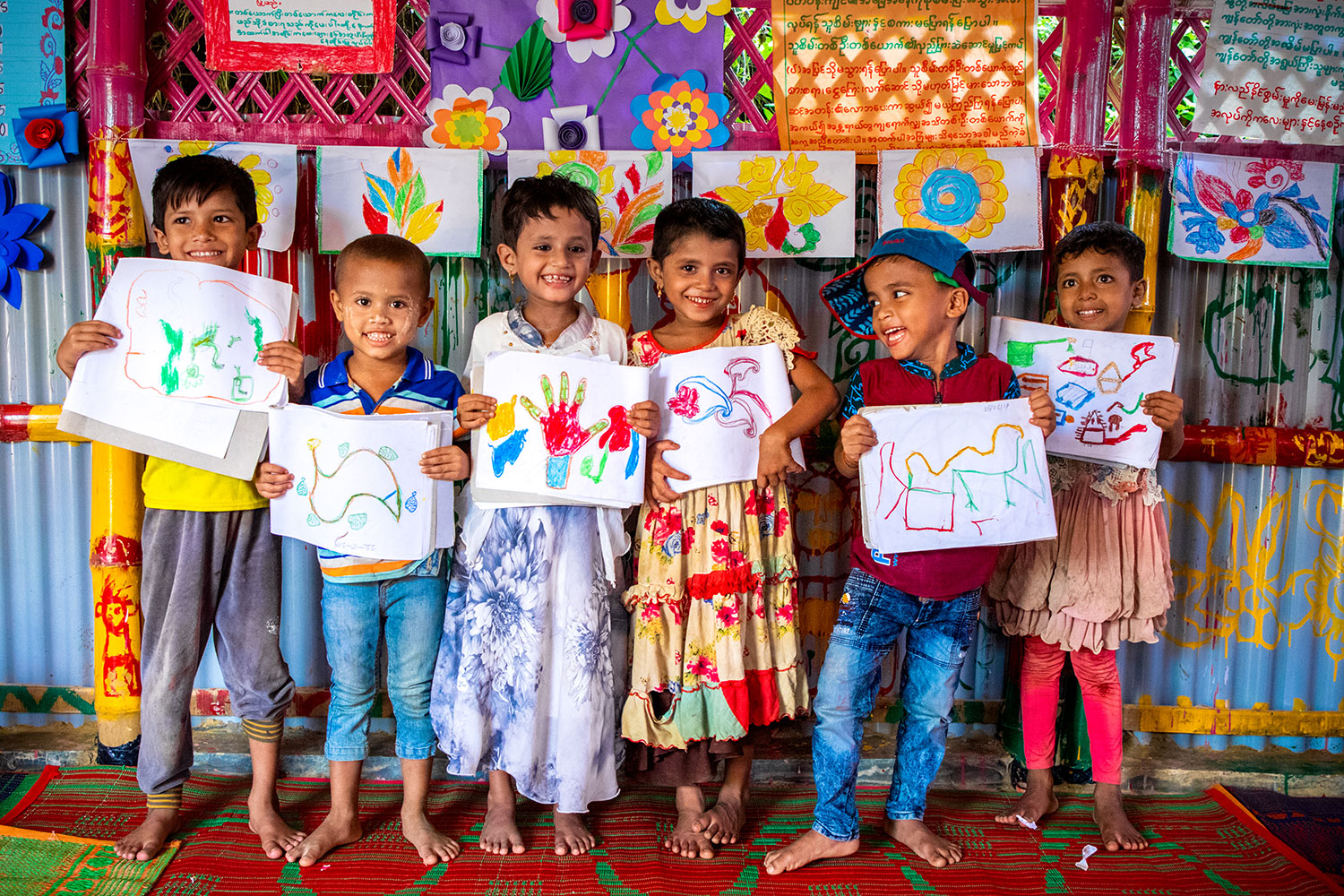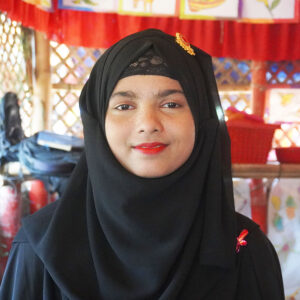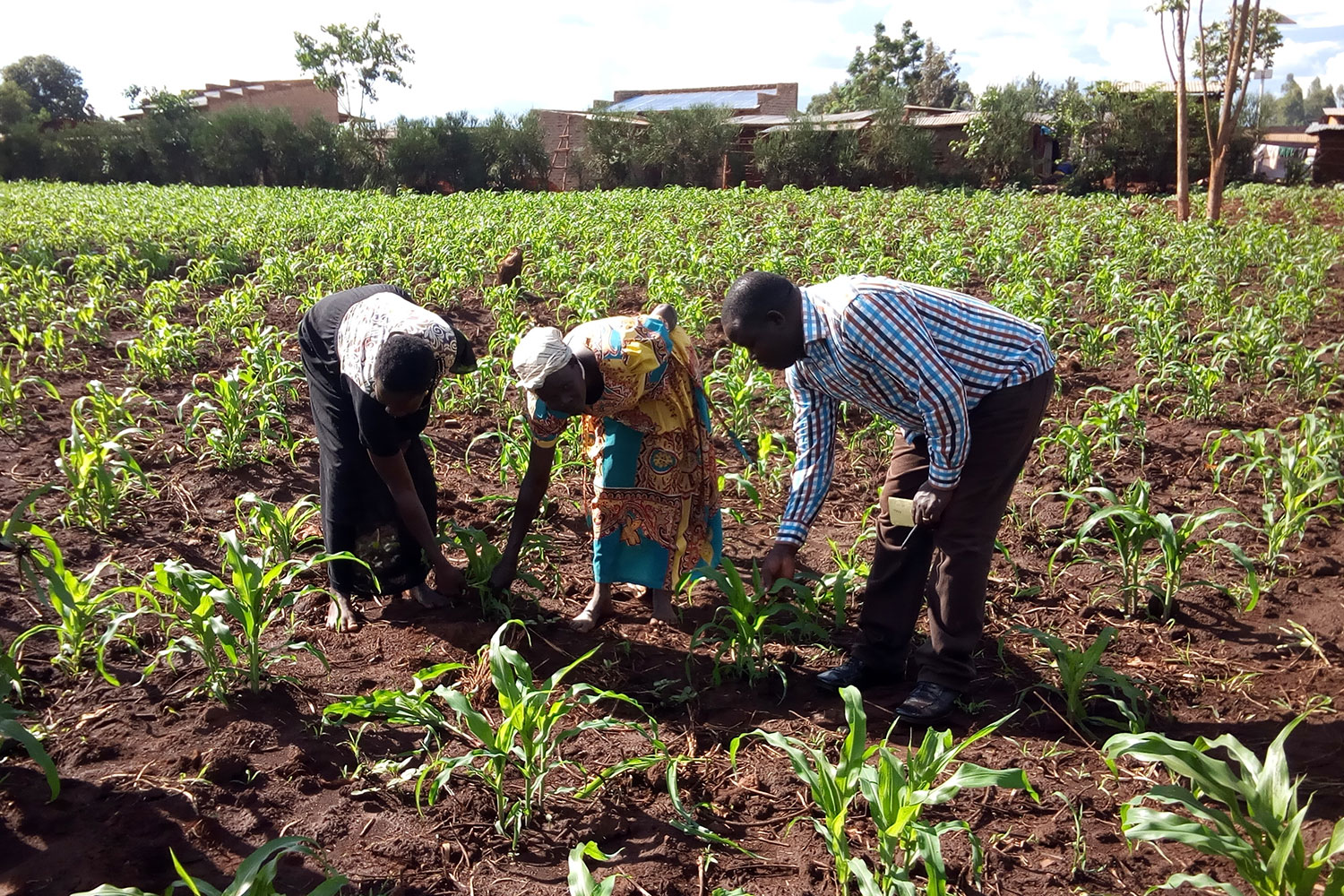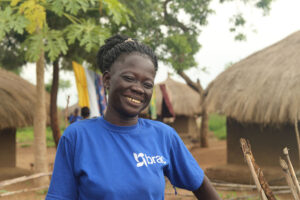Five things to know about refugees on World Refugee Day
June 20th marks World Refugee Day. Discover five facts about refugees — and find out how you can help.

BY SARAH ALLEN
Each year, the world marks World Refugee Day on June 20th — an international day to honor refugees and other displaced people who have been forced to flee their homes.
At BRAC, we know that every refugee has limitless potential: but they often lack the opportunity to realize it. On World Refugee Day, we are shedding light on the challenges they face, highlighting their inspiring stories, and calling on the world to step up for refugees.
On World Refugee Day, here are five things you should know about refugees.

1. There are more than 110 million displaced people globally.
Across the globe, there are more than 117.3 million displaced people who have been forced to flee their homes, including refugees, asylum seekers, internally displaced people, and other people in need of international protection.
As crises continue to compound and escalate, more and more families are becoming refugees due to conflict, war, hunger, and disaster. The number of refugees has tripled in last decade.
When disaster strikes, there is often a surge in media interest and donor attention. But when humanitarian aid dries up, refugees are often left behind.
At BRAC, we stand with refugees: today, and every day. Not just when disaster strikes, but years later, when the rest of the world has forgotten.
Learn more about BRAC’s work with refugees.

2. Two in five refugees are children.
About 40% of the world’s refugees are children: That’s two in five refugees. Approximately 47 million children are forcibly displaced.
As children become refugees — particularly young children — the trauma and violence they face can have a detrimental impact on their development, impacting their future education and employment outcomes. That’s why it’s critical that refugee children have holistic, playful social support.
BRAC’s Humanitarian Play Labs provide just that: A safe space for children to play, heal, and thrive amid the trauma and displacement. In Uganda and Bangladesh, they are incorporating a playful learning approach with psychosocial support, helping thousands of children and their families navigate the trauma of displacement and build resilience.
Humanitarian Play Labs also build cohesion among refugee and host communities, bringing together one Play Leader from each community, and children from both communities in the same center.
 They also create opportunities for the young women who run them. One such Play Leader, Shamima, is a Rohingya refugee who fled Myanmar and came to Bangladesh in 2017.
They also create opportunities for the young women who run them. One such Play Leader, Shamima, is a Rohingya refugee who fled Myanmar and came to Bangladesh in 2017.
“In Myanmar, as a female in the Rohingya community, I was not allowed to work or continue my education independently,” shares Shamima. “Now, I have a job with BRAC in the Humanitarian Play Lab at my camp, where I conduct sessions with children. I hope all Rohingya children receive proper, culturally sensitive education to become better human beings.”
Discover how Humanitarian Play Labs help children heal and thrive.

3. Lower income countries disproportionately host refugees.
Three quarters of the world’s refugees are hosted in low and middle income countries. As low-income countries face challenges of their own, these countries are less equipped to provide influxes of refugees with holistic support to rebuild their lives and reach their full potential.
Uganda is Africa’s largest host of refugees, with nearly 1.7 million refugees residing within its borders. The majority of refugees have come from South Sudan and the Democratic Republic of the Congo, and many have lived in Uganda for several years.
Similarly, Bangladesh is a major host of refuges, with around a million refugees sheltering in the already densely populated district of Cox’s Bazar.
Learn how you can help refugees rebuild their lives in Bangladesh and Uganda.

4. The Climate crisis is becoming a leading cause of displacement.
Traditionally, many people think of conflict, war, and famine as the major drivers of displacement. But climate change is a growing threat and cause of displacement.
As the climate becomes increasingly erratic and unpredictable, people from the flooded shores of South Asia to the drought-affected farmlands in East Africa are dealing with the impacts of climate change firsthand. Extreme heat, drought, flooding, and other weather disasters are intensifying, threatening lives and livelihoods.
In Bangladesh, for example, a hotbed for climate shocks, flooding and heatwaves have become increasingly severe, displacing people all over the country, and impacting the million refugees who shelter there.
Not only does climate change create refugees, it also makes life harder for existing ones. At the end of 2023, almost three in four forcibly displaced people were living in countries with high-to-extreme exposure to climate-related hazards: making it even harder for families to rebuild stable lives.
Learn how BRAC helps families adapt to climate change.

5. Refugees are full of potential.
Although refugees face challenges and barriers that may seem insurmountable, they are full of potential: All they need is the opportunity to realize it.
Edina’s story is one of many that offer proof that refugees have the potential to build lives where they not only survive, but thrive.
After fleeing South Sudan in 2017, Edina arrived in the Imvepi Refugee Settlement in the West Nile region of Uganda. With limited options and eight children to care for, including her own children and her brother’s children, she struggled to make ends meet for her family.

Since joining BRAC’s dual-generation program for refugees last year, she’s already seen many changes in her life. While her youngest children attended a BRAC Humanitarian Play Lab, she learned about health and hygiene, budgeting and saving, and starting a business. She received rabbits to raise, and built a new house with materials from BRAC.
From there, her entrepreneurial savvy took off. In addition to raising and selling rabbits, she started a business selling a traditional South Sudanese dish similar to a type of pancake. She also used earnings to rent a plot of land where she grows rice, and has begun embroidering linens and clothing to sell in her free time. Now, with four sources of income, she’s putting all of her children through school and saving money each week with a savings group in her community.
A year on, Edina’s story is still unfolding: and she is unlocking her potential more and more every day.
You can make a difference in the lives of refugees.
World Refugee Day is a chance to call attention to the more than 110 million people worldwide who have been displaced from their homes. Too often, refugees are forgotten by the news cycle, funders, and international NGOs. But BRAC remains there, providing services and support — and we know you’re still there, too.
Take action: Rush your gift today to help refugees rebuild their lives. By donating today, you’re not only giving money—you’re giving opportunity to refugees everywhere. Thank you for ensuring that no refugee goes unsupported.
Learn more about how you can make a difference in the lives of refugees.
Sarah Allen is Communications Manager at BRAC USA.